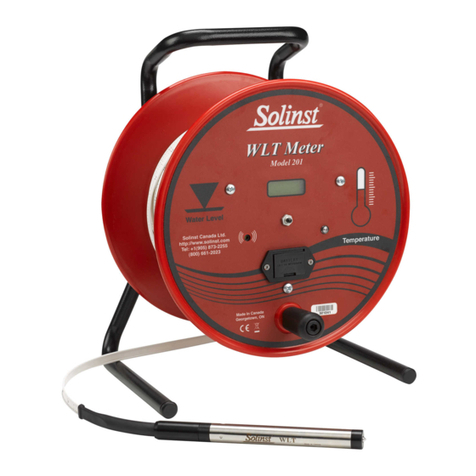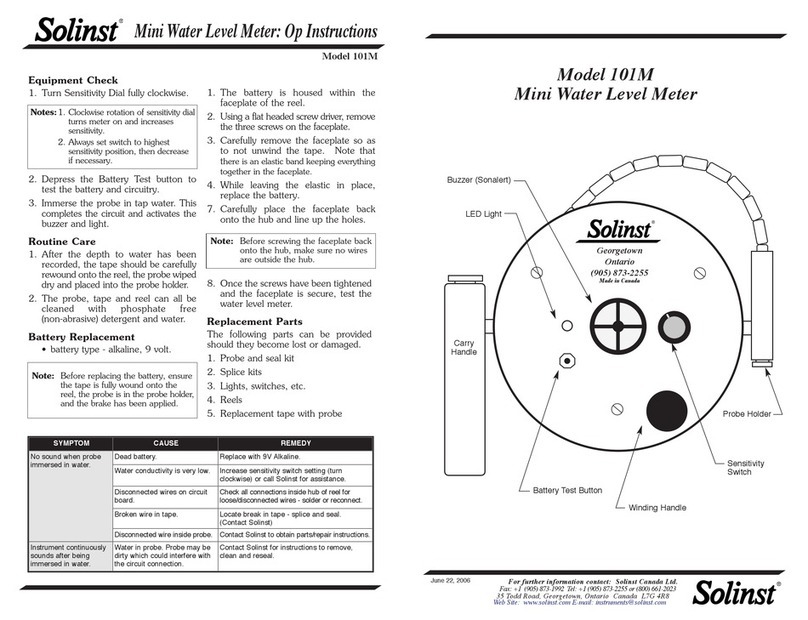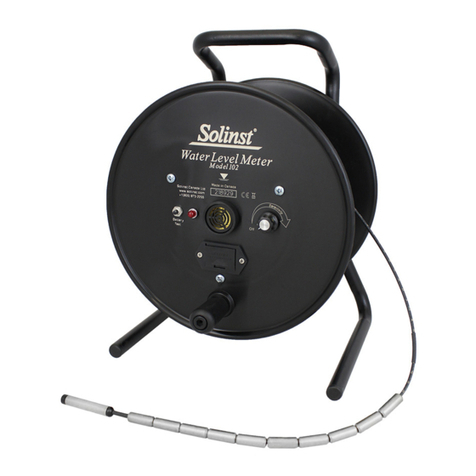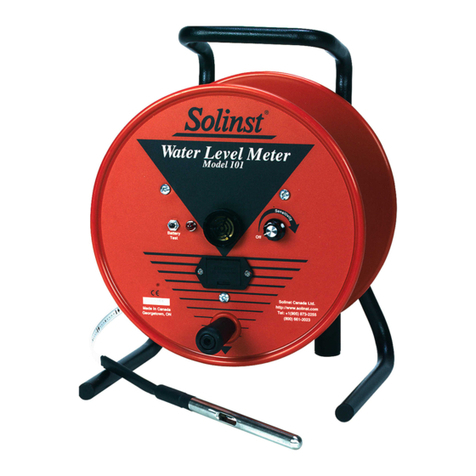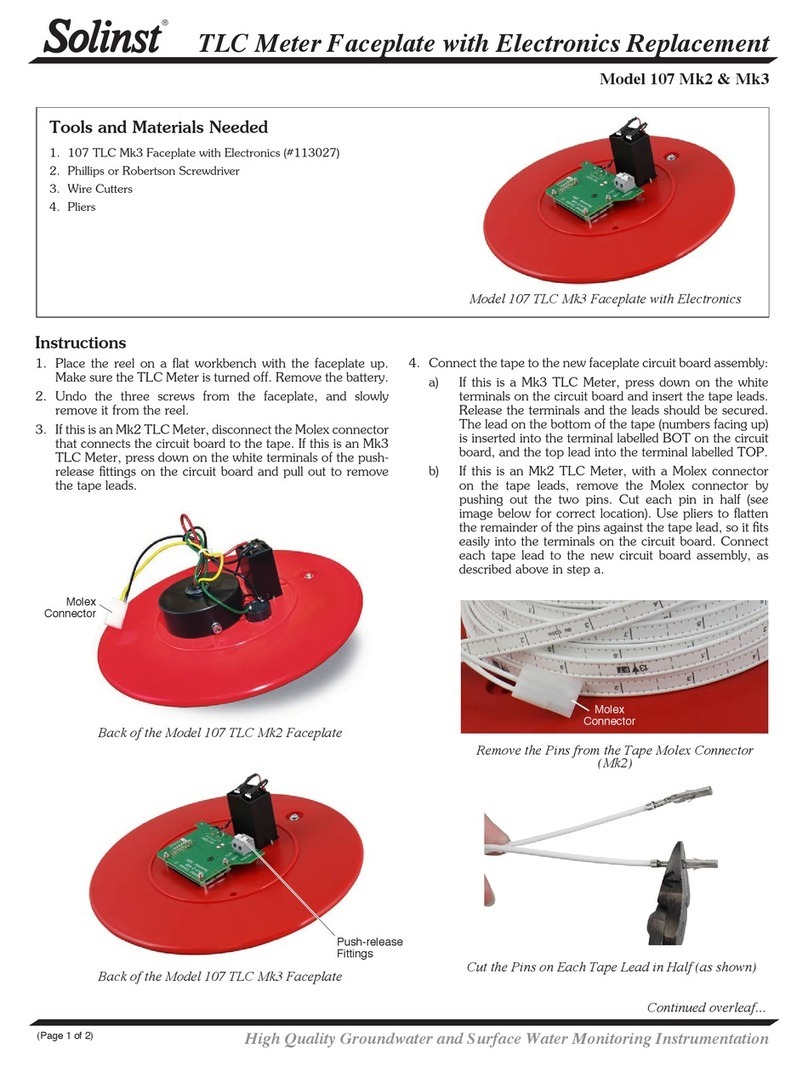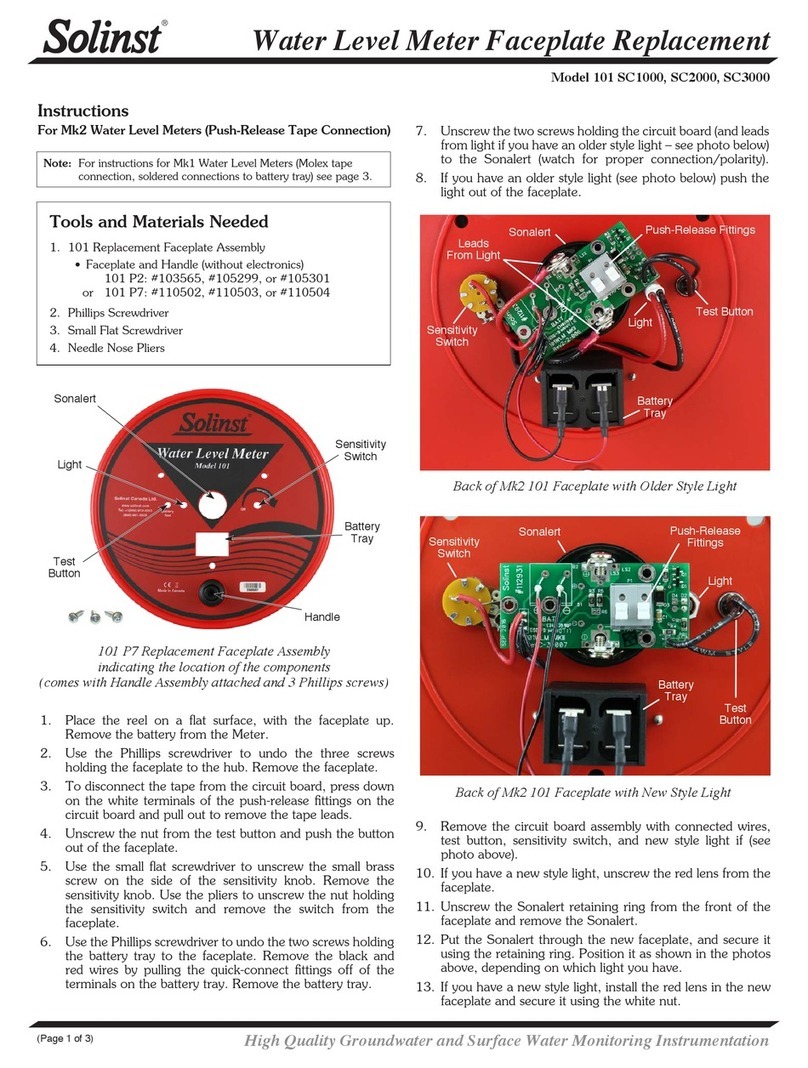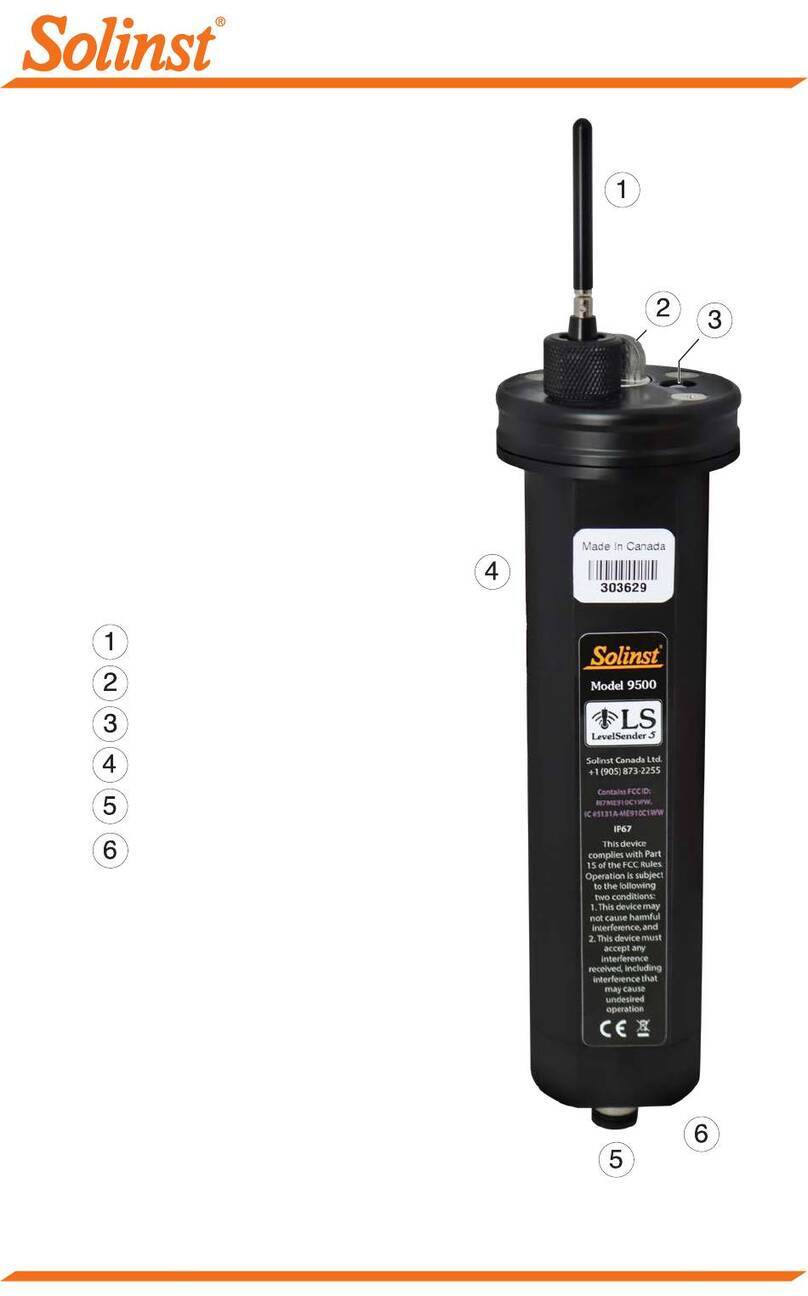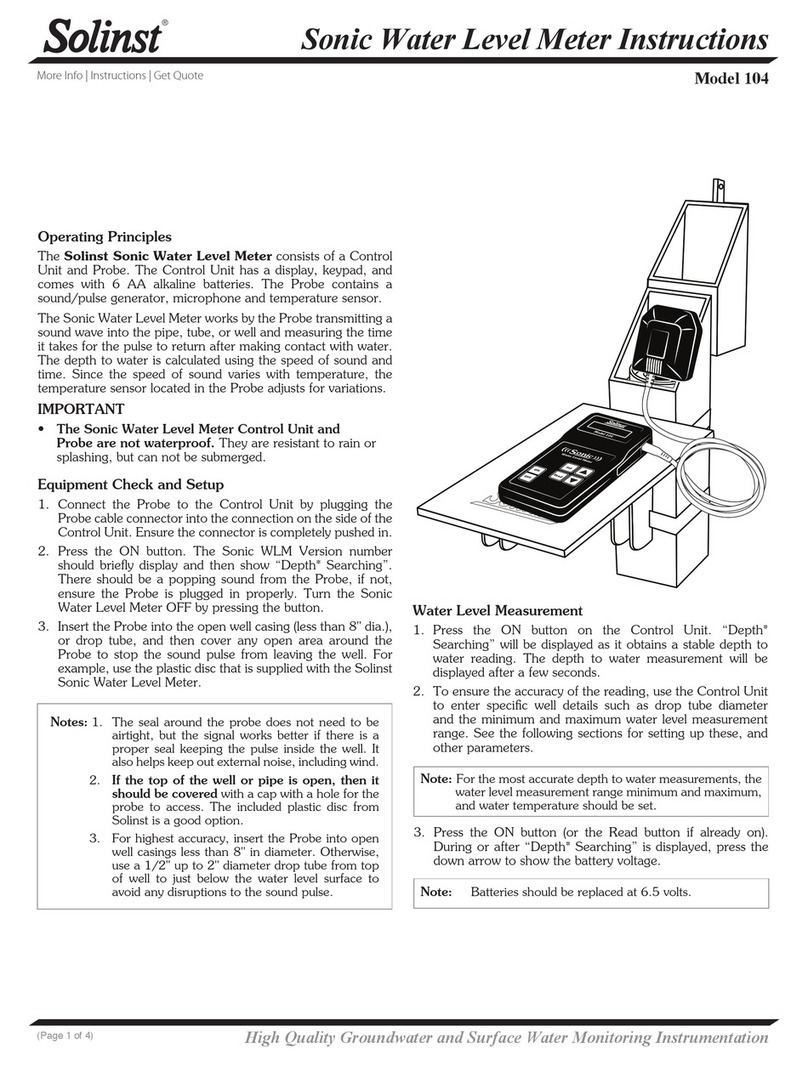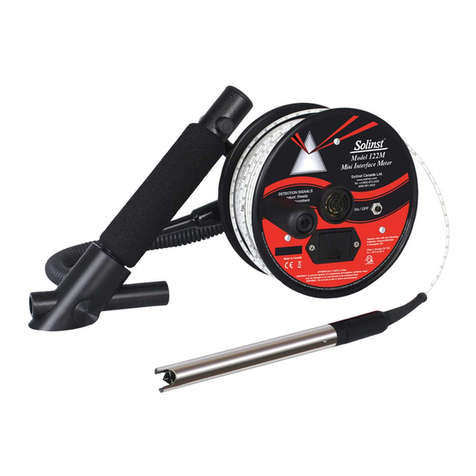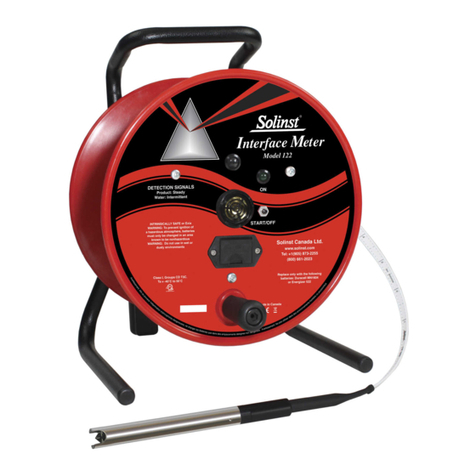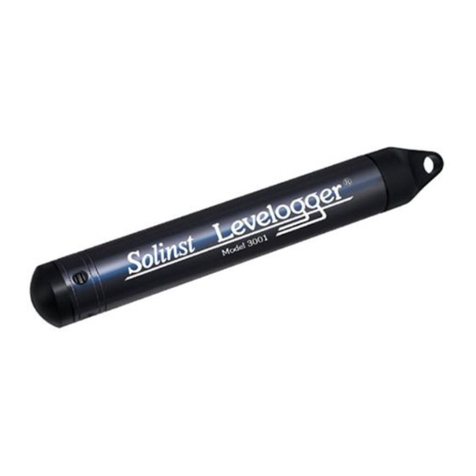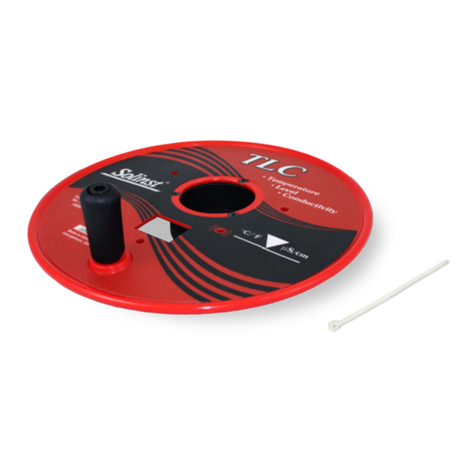
6. Use the small flat screwdriver to unscrew the small brass
screw on the side of the sensitivity knob. Remove the
sensitivity knob. Use the pliers to unscrew the nut holding
the sensitivity switch and remove the switch from the
faceplate. Save the knob and screw to be used with the
new sensitivity switch.
7. Remove the two screws to disconnect the old circuit board
assembly (and the wires connected to the light) from the
Sonalert.
8. Insert the new red lens through the opening in the faceplate
and secure using the white nut.
9. Use the pliers to bend the terminals on the Sonalert, so
they are straight up from the Sonalert (to accommodate
the new circuit board in between the terminals). Loosen
the Sonalert retaining nut on the front of the faceplate, so
you can reposition the Sonalert as shown in the photo on
Page 2 (negative terminal next to the battery tray).
10. Place the circuit board assembly in position on top of the
Sonalert, ensuring the sides marked +ve and -ve are lined
up with the corresponding terminals on the Sonalert and
the light seated in the lens.
11. Install the two screws into the Sonalert terminals. Do not
tighten. Wrap the two bare wires from the circuit board
around the screws, between the screw head and Sonalert
terminals. Start by bringing the wires underneath the
screws (see photo on Page 1). Tighten the two screws.
12. Insert the test button through the opening in the faceplate,
and secure it in place using the nut.
13. Insert the sensitivity switch through the faceplate with the
three connection prongs positioned towards the battery
drawer, slightly towards the centre of the reel. Tighten the
nut. Fasten the sensitivity knob on the front of the switch
using the brass screw.
14. Connect the black wire with quick-connect fitting to the
negative terminal on the battery tray. Connect the red wire
with quick-connect fitting to the positive terminal.
15. Remove the Molex connector by pushing out the two pins.
Cut each pin in half (see image at top right for correct
location). Use pliers to flatten the remainder of the pins
against the tape lead, so it fits easily into the terminals on
the circuit board.
Remove the Pins from the Tape Molex Connector
Cut the Pins on Each Tape Lead in Half (as shown)
16. Connect the tape to the new circuit board assembly by
pressing down on the white terminals on the circuit board
and inserting the tape leads. Release the terminals and the
leads should be secured. The lead on the bottom of the
tape (numbers facing up, may be black mark on lead) is
inserted into the terminal with a white square below it on
the circuit board.
17. Install the new battery.
18. With the probe in a glass of tap water, turn the Water Level
Meter to the ‘ON’ position. If the connections are correct
the buzzer and light will activate. If they do not activate,
check all connections and the polarity of the battery.
19. Reattach the faceplate to the reel using the three screws.
Square
Printed in Canada
March 19, 2018
(#113984)
(Page 3 of 3)
For further information contact: Solinst Canada Ltd.
Fax: +1 (905) 873-1992; (800) 516-9081 Tel: +1 (905) 873-2255; (800) 661-2023
35 Todd Road, Georgetown, Ontario Canada L7G 4R8
®Solinst is a registered trademark of Solinst Canada Ltd.

